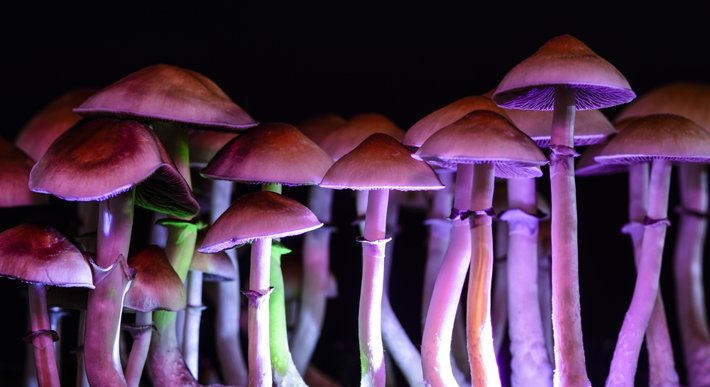Introduction:
Magic mushrooms, scientifically identified as psilocybin mushrooms, have a loaded and assorted cultural record that spans centuries. These enigmatic fungi have performed a considerable position in the rituals, spirituality, and creative expression of numerous civilizations close to the world. In this article, we will delve into the cultural and historical views surrounding magic mushrooms, analyzing their use, effect, and importance in unique societies.
Historic Use and Shamanic Methods:
The use of magic mushrooms can be traced again hundreds of decades, with evidence suggesting their presence in various historical cultures. One of the most well-documented instances is the use of psilocybin mushrooms by indigenous tribes in Mesoamerica. The Aztecs, for occasion, referred to these mushrooms as “teonanácatl,” translating to “flesh of the gods.” read the full info here in these cultures consumed magic mushrooms through religious ceremonies to induce altered states of consciousness, believing that it facilitated communication with the divine.
In the same way, indigenous tribes in Africa, this sort of as the Bwiti in Gabon, have a lengthy background of incorporating hallucinogenic mushrooms into their religious techniques. The mushrooms are thought to hook up the consumer with ancestral spirits, presenting guidance and insight. These methods spotlight the integral role magic mushrooms performed in historical shamanic traditions, serving as a software for transcendent ordeals and non secular exploration.
Magic Mushrooms in Western Tradition:
In the 20th century, the Western globe witnessed a resurgence of fascination in magic mushrooms, mostly because of to the affect of counterculture movements. Through the fifties and nineteen sixties, researchers like R. Gordon Wasson and Timothy Leary explored the psychedelic houses of psilocybin mushrooms, contributing to their increased attractiveness between the normal community. Leary, in individual, advocated for the therapeutic possible of these substances, believing they could lead to profound own and religious progress.
The 1960s also observed the common recreational use of magic mushrooms, as they grew to become synonymous with the psychedelic revolution. Nevertheless, this cultural movement sooner or later led to a backlash, with quite a few governments banning the use of psychedelic substances. Regardless of authorized restrictions, curiosity in magic mushrooms persisted, and modern research has revisited their possible therapeutic benefits, especially in the remedy of psychological wellbeing conditions.
Modern Investigation and Therapeutic Prospective:
In new a long time, there has been a resurgence of scientific curiosity in the therapeutic probable of magic mushrooms. Clinical scientific studies have explored the efficacy of psilocybin in treating problems these types of as despair, stress, and publish-traumatic worry problem (PTSD). The effects have been promising, indicating that thoroughly guided and supervised psychedelic ordeals may possibly have profound and long lasting constructive results on mental health and fitness.
The resurgence of interest in the therapeutic use of magic mushrooms has led to a reconsideration of their cultural and historic importance. Researchers are now drawing connections involving historical shamanic methods and fashionable psychedelic-assisted treatment, suggesting a potential continuity in the human use of these substances for spiritual and psychological exploration.
Authorized and Moral Concerns:
Irrespective of the expanding system of evidence supporting the therapeutic benefits of magic mushrooms, authorized and ethical issues continue to be substantial hurdles. Lots of countries classify psilocybin mushrooms as managed substances, limiting their use and investigation. Nonetheless, a change in attitudes is transpiring, with some jurisdictions decriminalizing or legalizing the leisure and therapeutic use of these mushrooms.
The ethical dimensions of utilizing magic mushrooms in a therapeutic context also increase queries about safety, consent, and cultural sensitivity. Scientists and policymakers need to navigate these complexities to make certain responsible and equitable entry to the likely positive aspects of these substances.
Summary:
Magic mushrooms have woven a fascinating tapestry all through human historical past, connecting ancient shamanic practices with up to date scientific analysis. From their function in indigenous rituals to the counterculture actions of the 20th century and the resurgence of therapeutic exploration today, magic mushrooms carry on to captivate and challenge our comprehension of consciousness and spirituality.
As we navigate the cultural and historical views on magic mushrooms, it is important to strategy their use with regard for various traditions, a commitment to ethical criteria, and an openness to the opportunity therapeutic positive aspects they might offer. The ongoing dialogue concerning historical wisdom and fashionable science guarantees a deeper comprehension of these enigmatic fungi and their position in the tapestry of human experience.
Exploring Cultural and Historical Perspectives on Magic Mushrooms
Skip to content
